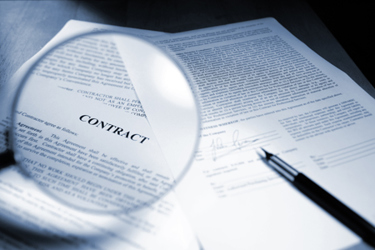Royalties In Hybrid Licensing Agreements: Careful Drafting Is Critical
By Oderah C. Nwaeze and Amy Farris Wolfe

Royalty-bearing license agreements are a cornerstone of commercialization in the life sciences and technology industries. Companies often use them to expand their business into new markets while generally avoiding the exorbitant financial commitments (and risk) required to research, develop, and launch a new product in a new territory or country. In the life sciences world, a U.S.-based drug manufacturer that wants to sell its drug in Nigeria could simply out-license its intellectual property to a pharmaceutical company in Lagos, allowing for that company to leverage the patents and pre-existing supply chain to make and sell the product consistent with the laws of Nigeria. And in return, the Nigerian company would have to pay royalties for the sale of the drug in the agreed-upon geographic location.
In the previous example, the U.S. company broadens its geographical scope without having to lift a finger — a win-win for the licensor; licensees, however, run the risk of overpaying consideration in exchange for their benefit of the bargain. Although such out-licensing agreements can unlock value for both licensors and licensees, complex legal issues arise regarding the duration and enforceability of royalty obligations. Three recent Delaware cases, Corteva Agriscience LLC & Agrigenetics, Inc. v. Monsanto Co.; Bayer CropScience LP & Monsanto Company v. Corteva, Inc., et al.; and ANI Pharmaceuticals, Inc. v. CG Oncology, Inc., provide timely guidance on these issues and underscore the importance of careful drafting.
But before getting into those cases, it is important to understand how courts have historically responded to royalty-bearing licensing agreements that involve patents, which provide only time-limited exclusionary rights. Long ago, in Brulotte v. Thys Co., the United States Supreme Court announced a bright-line rule: any contract that requires payment of patent royalties after a patent’s expiration is unenforceable. The rationale was that allowing post-expiration royalties would not only improperly extend the patentee’s statutory monopoly, in contravention of federal patent policy, but also would compel a licensee to continue paying consideration without receiving exclusivity in return. There, the plaintiff purchased some machines from the defendant in a deal that gave plaintiff a license to use the machine and required that plaintiff pay royalties to the defendant for that use, beyond the life of the patent. Eventually, the plaintiff filed suit to invalidate the post-termination patent royalty, arguing that it was improper to charge the plaintiff for use of a product that was in the public domain. The Supreme Court agreed.
In Kimble, the defendant purchased the plaintiff’s patent for about half a million dollars and promised a 3% royalty on future sales for the life of the product. As soon as the patent expired, the defendant sought a declaratory judgment that it could stop making royalty payments, insisting that Brulotte prohibited post-expiration patent royalties. The defendant argued that any requirement that it must keep paying royalties to the plaintiff after the patent’s expiration was unenforceable as a matter of law, regardless of the contract’s language. The District Court and the Ninth Circuit sided with the defendant, holding that the operative agreement could not require payment of royalties that accrued after the patent expired.
The United States Supreme Court affirmed, concluding that Brulotte remains good law: “[a] patentee’s use of a royalty agreement that projects beyond the expiration date of the patent is unlawful per se.” The Court further counseled that parties could structure agreements to achieve similar financial results in Brulotte-compliant ways (e.g., amortizing payments, basing royalties on non-patented rights (like know-how), or tying royalties to non-infringing uses).
Delaware’s Recent Guidance: Monsanto, Bayer, And ANI Pharmaceuticals
As the Kimble Court noted, despite the fact that a licensee cannot be required to pay royalties for an expired patent, out-licensors may be able to accomplish their long-term financial aims by crafting the royalty as consideration for both patented and non-patented assets, including know-how, customer lists, and biological materials. Three recent Delaware cases have addressed that issue, ultimately agreeing with the United States Supreme Court in Kimble and concluding that hybrid (patent and non-patent) licensing agreements can require royalty payments that survive the life of the patent, but royalty claims based solely on post-expiration use of patented technology will not survive.
In Monsanto, the parties entered a worldwide license covering patents, know-how, and biological materials related to herbicide-resistant corn. The agreement required royalties on all sales worldwide until the last patent anywhere in the world expired. When patents issued by the United States and Canada expired, the plaintiff argued that it should no longer owe royalties on sales in those countries, and that any post-expiration royalties would be unenforceable under Brulotte.
The Delaware Superior Court enforced the agreement as written, holding that:
- the contract unambiguously required royalties on all sales until the last patent anywhere in the world expired, regardless of where the sale occurred;
- the royalty covered both patented and non-patented rights; and
- under Kimble, “latest-running-patent” agreements that cover non-patented rights do not violate Brulotte.
In another case, Bayer, the Delaware Superior Court’s application of Brulotte caused it to conclude that the plaintiff’s royalty claims were unenforceable because they were based on the defendant’s alleged post-expiration use of patented technology. Along the way, the court rejected the plaintiff’s attempt to dress up post-expiration royalties as deferred compensation after the defendant presented proof that its use was irrefutably after the plaintiff’s patent expired. Both Bayer and Monsanto have been appealed and argued before the Delaware Supreme Court.
ANI Pharmaceuticals involved a sale of virus technology meant to combat cancer, with CG Oncology agreeing to pay royalties on net sales of a key cancer therapy and related products. More than a decade later, with most relevant patents set to expire or having expired, CG Oncology attempted to end its royalty obligations, arguing that those commitments were unenforceable “perpetual patent royalties” that violated Brulotte.
ANI filed suit, and CG Oncology moved to summary judgment, which the Delaware Superior Court denied. In refusing to declare the royalty provision unenforceable as a matter of law, the Court emphasized that the contract clearly required royalties on all sales of the cancer therapy, but whether that arrangement ran afoul of Brulotte depended on a couple unanswered questions:
- was the royalty “subject to patent leverage” in the negotiations?
- were the royalty payments based on the post-expiration use of the patents?
Because there is no categorical rule invalidating all perpetual or hybrid royalties, the Court’s inquiry was meant to determine whether, as in Brulotte and Kimble, the parties’ business arrangement extended ANI’s patent monopoly or rights beyond the bounds or expectations of the law and related jurisprudence. If the existence, potential, or value of patent rights play a material role in the negotiations for the royalty-bearing agreement, the obligation to pay post-expiration patent royalties likely will be invalidated.
Practical Takeaways
- Careful Definition of Royalty Base and Term
- Specify whether royalties are tied to patents, non-patent rights, or both.
- Include contractual language that was informed by Brulotte or Kimble, and that specifies the parties’ intent regarding post-expiration royalties.
- State clearly if royalties end with the last-to-expire patent anywhere in the world or on a country-by-country basis.
- Hybrid Structure
- If royalties will continue after patent expiration, ensure that non-patent rights (know-how, data, trade secrets, materials) are valuable and clearly delineated.
- Consider discounting royalties after patent expiration or separately accounting for patent and non-patent royalties.
- Avoid Patent Leverage Pitfalls
- Document negotiations to show that royalties for non-patent rights are independently justified and not simply a work-around to extend patent exclusivity.
About The Authors:
 Oderah C. Nwaeze is a Partner at Faegre Drinker Biddle & Reath LLP.
Oderah C. Nwaeze is a Partner at Faegre Drinker Biddle & Reath LLP.
 Amy Farris Wolfe is General Counsel & Head of U.S. Legal Department at Aurobindo Pharma USA, Inc.
Amy Farris Wolfe is General Counsel & Head of U.S. Legal Department at Aurobindo Pharma USA, Inc.
